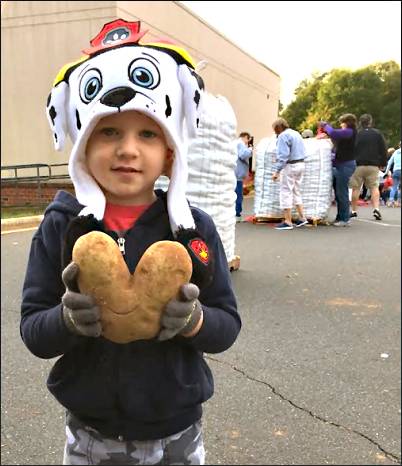By Jean Blish Siers *
Many years ago, when our son was in middle school, his personality changed suddenly in a way that felt different from the usual teenage angst and misery. He became sullen and silent. An excellent student, he wasn’t keeping track of schoolwork. One day, I rifled through his backpack. I feared, of course, drugs. Instead, I found two or three of his lunches that I had lovingly packed each morning. They were squashed, unopened, and uneaten, in the bottom of the bag.
 It turned out that the incredibly short time the kids were given to eat conflicted with the only time the kids had to talk with their friends, and my son chose socializing. We made a few changes – bigger breakfasts, lunches that were easier to eat and a promise from him to eat something … anything. And our problem went away.
It turned out that the incredibly short time the kids were given to eat conflicted with the only time the kids had to talk with their friends, and my son chose socializing. We made a few changes – bigger breakfasts, lunches that were easier to eat and a promise from him to eat something … anything. And our problem went away.
For 13 million children in America, there is no such easy fix. They come from food-insecure households and for many of them, at some point during the school year, those free breakfasts and lunches are the only meals they get. It also means that from Friday lunch to Monday breakfast, they might go up to 68 hours without a substantial meal.
Multiple studies show the importance of nutrition for students to learn. Jamie Seaton, writing in The Washington Post this month, says, kids who go to school hungry may suffer an inability to concentrate and often fall behind academically. Hungry kids are more likely to miss school because of illness, and more likely to suffer from depression and anxiety, and develop behavioral problems as teenagers. They are more liable to drop out before graduation, which leads to lower paying jobs and a greater probability of being food insecure adults.
There are lots of great programs out there, besides free school meals, to help ameliorate this problem. Many school systems now partner with food banks or churches to provide backpacks of food for low-income students to take home over the weekend.
I’ve helped pack those bags, and while they meet a need, they are by necessity filled with processed, salty, and fatty shelf-stable foods, easy to zap in a microwave, and fill a stomach quickly. Fruits are packed in cans of sugary syrup. There isn’t a vegetable in sight. I wonder how those kids feel bringing home a meal that’s not enough to share with other members of the hungry household. What about longer breaks and summer vacation? And it bothers me the length that families must go to in order to cobble together a minimum of food for basic survival.
I’ve worked with high-poverty day-cares that would get loads of produce from Society of St. Andrew, bag it, and have it waiting for parents as they picked up children. They also provided recipes and helpful preparation tips. It’s not easy to do, but it’s doable. It would be great to get fresh produce into schools at all levels, and work with families to help them learn to prepare it. It takes time and staffing and a lot of dedication.
As we prepare for another big harvest season here in North Carolina, I’m thrilled that we are able to get so much food out to so many agencies that reach deep into our neighborhoods. But are we feeding 13 million children? And if we are not, who is?
* Jean Blish Siers is SoSA’s Charlotte Area Gleaning Coordinator.
APR
2017

